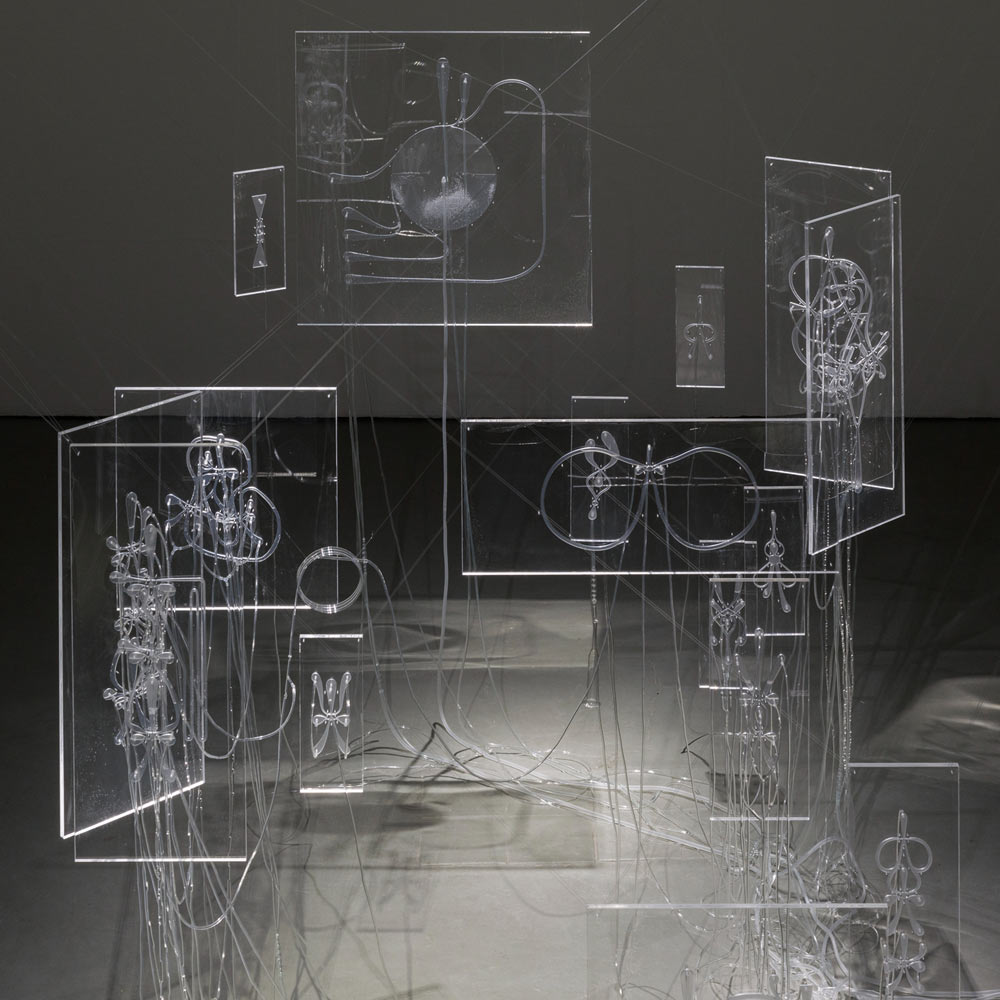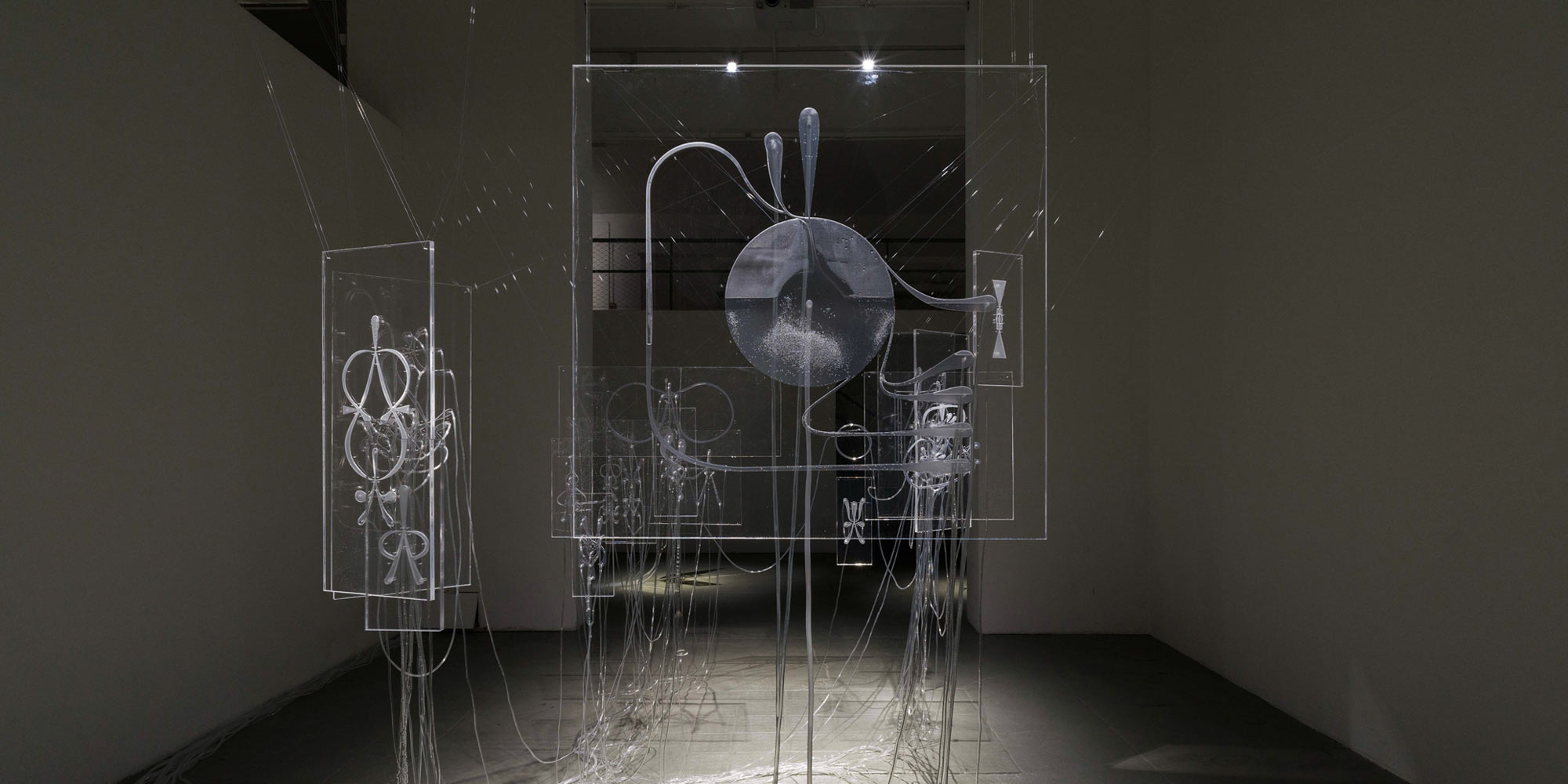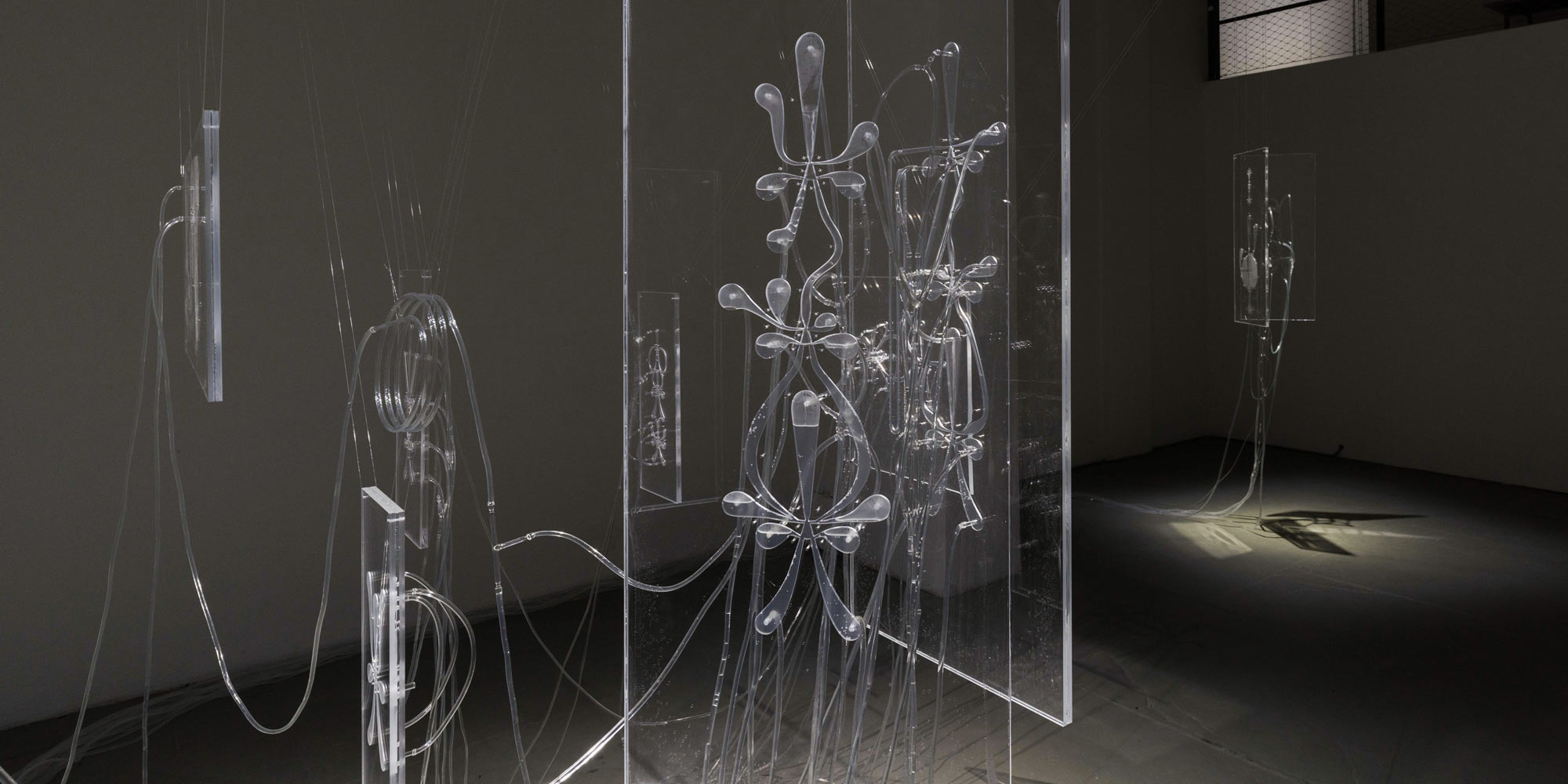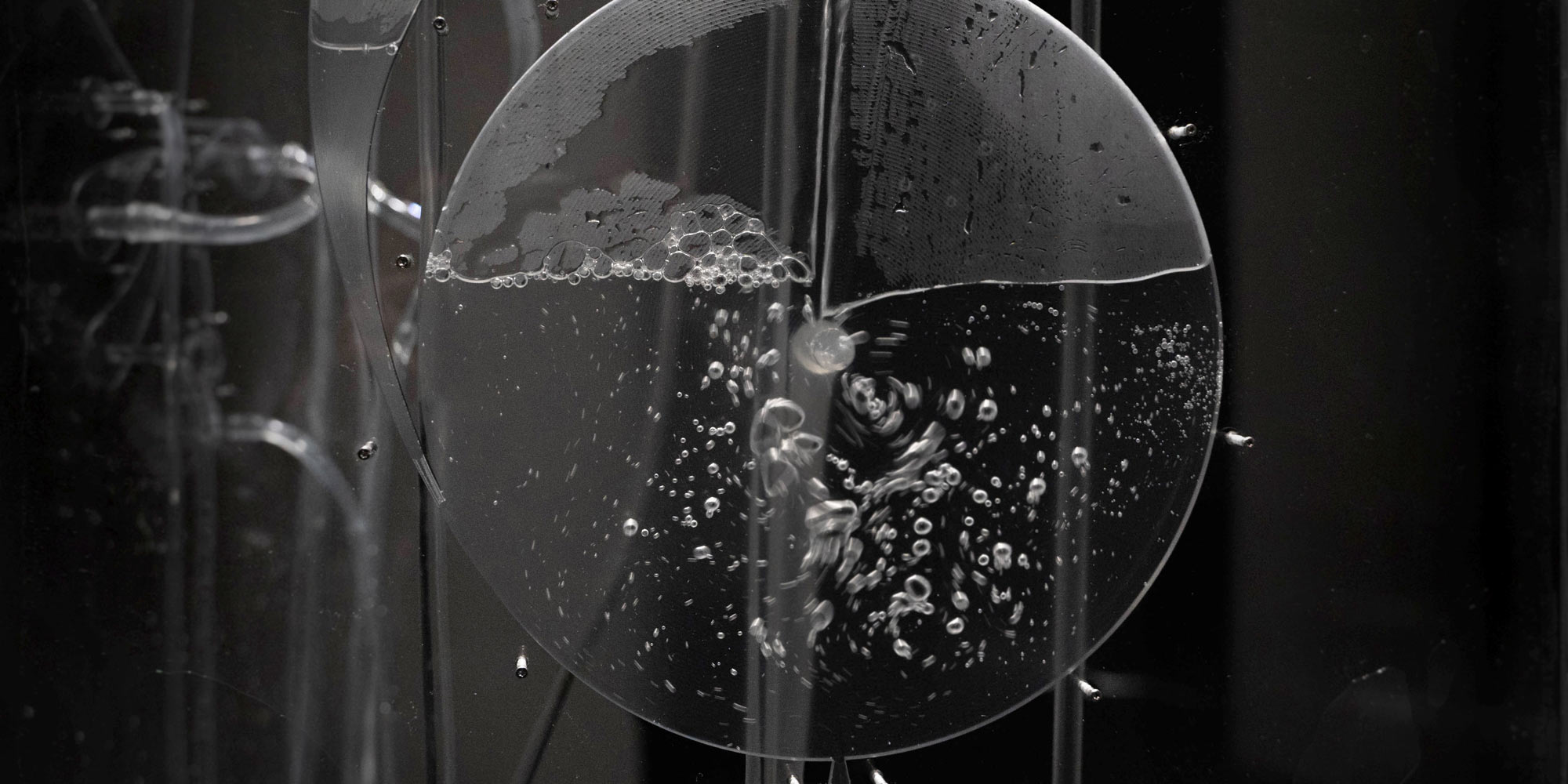Powered by water and air, Fluid Anatomy unveils an analogue hydro-pneumatic computer guiding fluids through movement, pressure, and resonance. Over 20 historical fluidic forms, restored from patents, entangle into a large circuit. Water flows through branching tubes, adhering to convex morphologies where form directs function. An oscillator clocks the flow, while fluidic sensors trace presence. Circuits built from “fluidistors” and logic gates count, store, subtract, and compare. Parallel air paths activate oscillators into pneumatic rhythms.
Emerging in the 1950s, fluidics performed electronic-like operations in aerospace, automation, and medicine. With the rise of speed-focused microelectronics, it faded into obscurity. Reviving fluidics as a tactile and resonant technology, Fluid Anatomy reveals a parallel history, one where computation unfolds in sync with the rhythms of water and air. Transparent plates and tubes entangle to make operations visible, transforming movement and sound into a vibrating computational dialogue.







